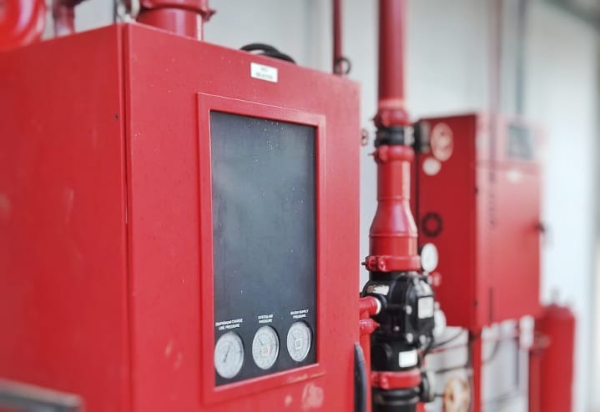How to Ensure the Safety of Data Centers from Fire Hazards
- Blogs Tuesday, 11 June 2024 08:51 • 5 minutes

Numerous industries rely heavily on data centers these days, especially once they are dealing with big data.
Since fire is a force majeure, data centers must have strong protection and preventative measures in place. With servers running 24/7 to handle big data storage and generating intense heat, data centers need to implement effective measures to safeguard mission-critical data and prevent even the smallest spark.
Comprehensive Fire Prevention and Protection Strategies for Data Centers
Data centers, especially Data Center Tier 3 or Data Center Tier 4, which mostly house servers, data storage systems, switches, routers, and other IT devices are critical equipment that needs to be well protected, especially from fire hazards. The best way to protect this equipment from fire is to prevent the fire from developing in the first place.
To accomplish this, the data center or colocation providers must guarantee the following:
・Original equipment manufacturer parts for its PDUs, Racks, RPDUs, industrial sockets, and cooling systems.
The usage of customized or non-type tested equipment may trigger spark or ignition due to rising temperature during usage and combine with combustible materials that are not certified for use in commercial or industrial environments.
・ High-quality cables to power the racks :
The temperature inside standard LV power cables, including NYY (PVC-PVC insulated) cables, needs to be adequately maintained. When used near its rated capacity, the temperature can increase near 90degC which might combust nearby materials. NYY cable also easily burns when combusted. Newer data centers these days use PVC-XLPE insulation or N2XY cable for power distribution. N2XY cable does not easily catch fire, when it does it usually lasts for less than a meter, and the fire won’t spread.
・ State-of-the-art monitoring systems :
The combination of an Electrical Power Monitoring System (EPMS) and an Aspirating Smoke Detection (ASD) System is very effective in detecting the initial stage of fire development from electrical failure which is called the “Incipient Stage”.
In this stage, the fire is not yet in the form of a flame. Furthermore, heavy smoke, which is extremely difficult for regular smoke detectors to detect, is not usually caused by electrical failure. An ASD with laser optics can easily differentiate electrical failure smoke from normal air around the area. With an alarm from both systems, the operator can pinpoint the incipient fire location and take action accordingly.
・ No Combustible Material Policy:
Finally, combustible materials such as cardboard boxes, plastic wrap, bubble wrap, or any other combustible materials can not be stored inside the rack or the data hall premises. Combustible materials can easily catch and spread fire to the vicinity.
Once prevention is implemented successfully, the next step is to ensure an active fire protection system is available to extinguish the fire.
See also : Meet Tier 4 Data Center: The Powerhouse of Reliability
Ensuring Safety and Compliance
Uptime Institute advises using a water-based sprinkler system with pre-action activation or a low-pressure clean agent suppression system to extinguish the fire. They also recommend using low-pressure clean agents such as the Novec 1230 system to minimize the risk of accidental/in-advertent release that can cause IT equipment failure.
However, most of the low-pressure clean agent systems only work for small areas, thus not suitable for co-location data. Furthermore, the Data Center must also comply with the local regulatory body.
Another important aspect of fire protection system provision is ensuring the equipment functions properly when needed. Regular preventive maintenance is essential to ensure the functionality of this equipment. Fire system equipment is not regularly used but is crucial in the event of a fire, which is why preventive maintenance is mandatory to ensure system readiness while handling fire.
By embracing advanced technologies and innovative approaches, data centers can safeguard their critical infrastructure, ensuring continuous operation and data integrity in an increasingly interconnected world.
About Bersama Digital Data Centres
Bersama Digital Data Centres (BDDC) stands as a certified Tier 3 Data Center and Tier 4 Data Center platform, boasting ISO Certification, where both local and international businesses in Indonesia can collocate and seamlessly integrate their digital infrastructure within a unified ecosystem. Positioned strategically within the Jakarta region, our facilities offer high levels of interconnectivity, facilitating the smooth operation of digital business functions for enablers.
